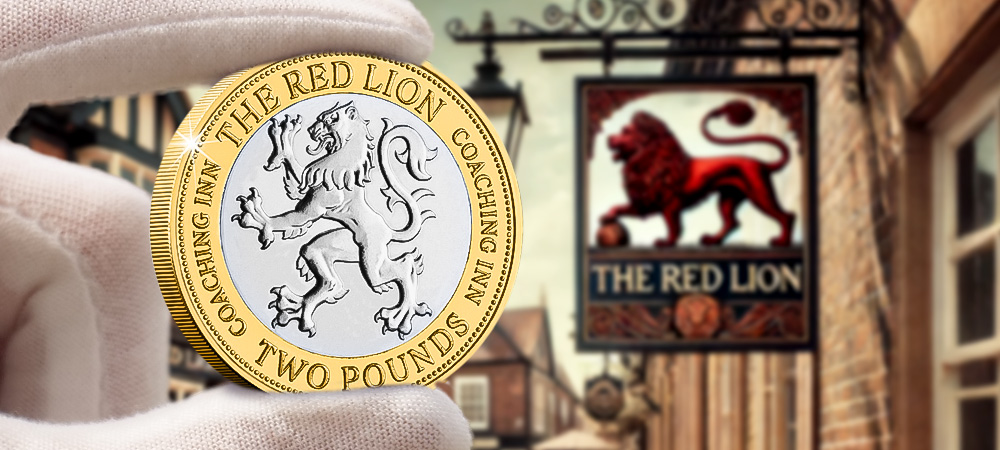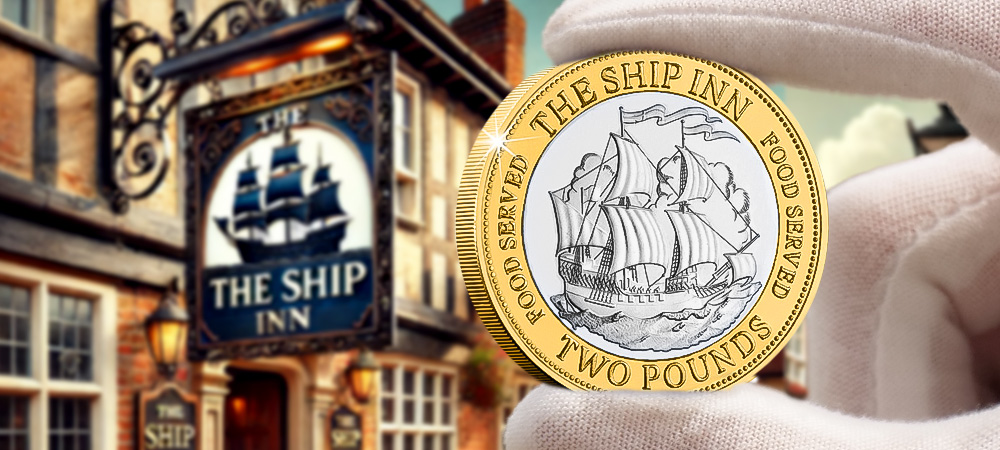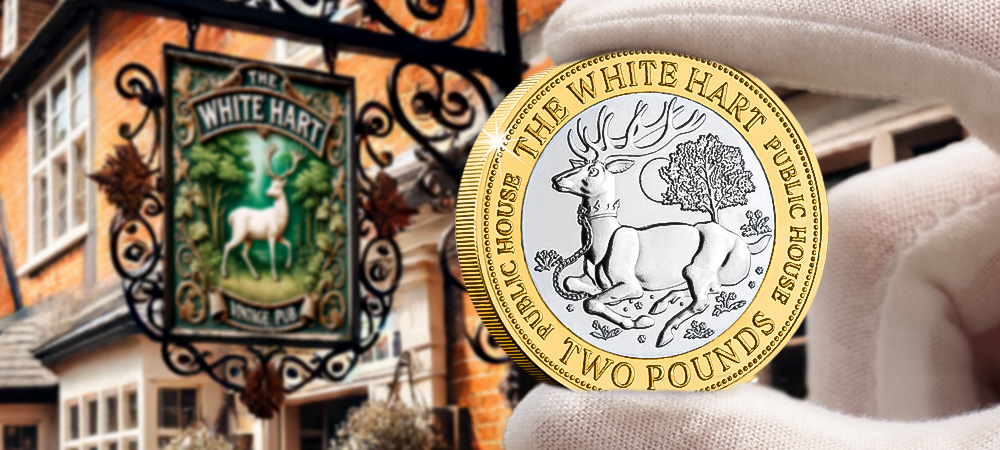Posts Tagged ‘British history’
The inspiration behind The Great British Pubs £2 Collection 🍻
“The pub sign says: you are still in England. Come in here and – however far from home you are, however, outlandish our name – you will find the comforts of your local town or village.”
Sebastian Faulks, ‘Icons of England’. Edited by Bill Bryson, 2010
Following the special release of The Great British Pubs Collection, we wanted to delve into the history behind the iconic pub signs featured on the coins themselves.
It turns out the concept of a pub sign has been around for over 1,000 years! Spawning from the Roman custom of hanging vines outside to let thirsty travellers know they would soon have refreshment – combined with the Roman’s arrival in England, and the lack of grape vines to drape across the pub entrance, an evergreen bush was used as an alternative. So, pubs named The Bush or The Holly Bush owe their name to this ancient custom. The very first sign that there was a pub nearby…
The pub sign as we know it today was actually a royal decree. In 1393 King Richard ordered, ‘That whoever shall brew ale in the town, with the purpose of selling it, shall hang out a sign otherwise he shall forfeit his ale.’ As a result, many ale houses began to display signs. But with many still being unable to read it was necessary to use painted pictures so the establishment could be clearly identified.
So, keep reading below to explore the origins of each pub featured on the brand new £2 coin collection.
The Red Lion
The Red Lion is probably one of the most common names for a pub. It originates from the time of James VI of Scotland and I of England, uniting the Scottish and English crowns in 1603.
To emphasise the newfound union between the crowns of Scotland and England, James decreed that the heraldic red lion of Scotland should be displayed on all buildings of importance – which included pubs.
The Ship Inn
As a maritime nation, there is a rich tradition of seafaring and trade that has resulted in many pubs having a name related to ships.
In some cases, the ships depicted on these signs were specific, such as Victory, Vice-Admiral Nelson’s flagship.
The Royal Oak
Another popular pub name is The Royal Oak. Originating after the Battle of Worcester in 1651, fought during the English Civil War.
Charles II’s Royalist Army was defeated during this battle by Cromwell’s Parliamentarians. Charles then had to flee for his life, seeking refuge in the form of a great oak tree near Boscobel House in Shropshire – with hopes that he would not be spotted by Cromwell’s men.
His plan succeeded and having evaded capture, Charles II went on to be restored to the throne. As a result of this dramatic tale of cunning escape, the tree became known as the Royal Oak and pubs across the country were named in tribute.
The White Hart
As mentioned at the beginning of this blog, it was the 1393 decree of Richard II that made pub signs compulsory. The White Hart was Richard’s personal badge and so many pubs chose to adopt the name at the time.
There’s even a Grade II listed sign for The White Hart in Bletchingley, Surrey – dating back to the 18th century. It is shown in the image below.

The Rose and Crown
Rooted in a key event of British history, The Rose and Crown celebrates the end of the War of the Roses 1455-1487. A series of civil wars for the throne of England between two competing royal families: the House of York and the House of Lancaster.
The result was the uniting of the red rose of Lancaster and the white rose of York when Henry Tudor married Elizabeth of York. Hence the literal phrasing of the rose and crown together, united.
Where you can get your set today
The Great British pub is at the heart of the community. As you’ve read, this has been the case for generations, so celebrate this integral part of Britain’s culture with The Great British Pubs £2 Coin Collection!
These coins are not just a tribute to the historic artwork above pub entrances, but also a celebration of the stories and memories created within their walls.
Click here to secure yours today >>>
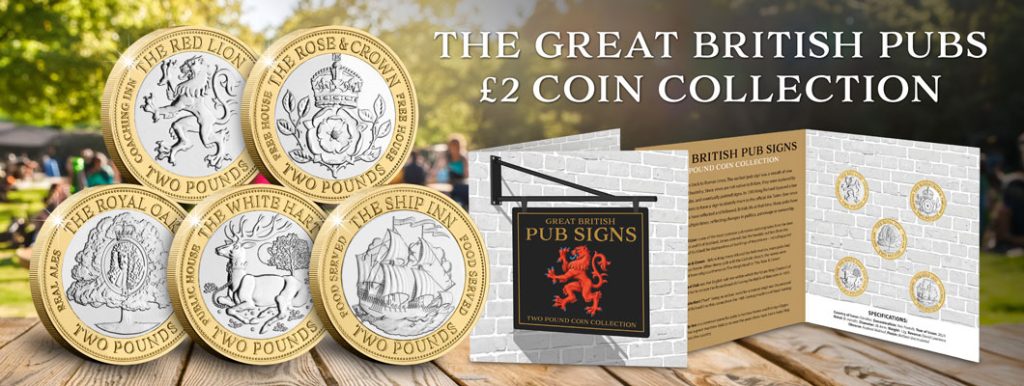
Operation Colour Scheme. The Fire Service’s Top Secret D-Day Mission.
2024 marks the 80th anniversary of D-Day. On 6th June 1944, the Allied Forces launched one of its biggest military operations – they came by land, sea and air and would eventually bring about the liberation of Europe and the end of World War II.
But as D-Day was being planned, more and more equipment was stockpiled in the South of England and needed to be protected, and that’s why the National Fire Service Commanders were tasked with a top secret mission of their own – Operation Colour Scheme.

Operation Colour Scheme: Protecting the Overlord Invasion’s Infrastructure
Operation Colour Scheme, a little-known but vital aspect of the Fire Service’s activity in World War II, involved moving 11,000 firemen and women and over 1,200 fire fighting vehicles to the South of England to protect resources being stored in rural areas.
In 1943, the German bombing offensive was at a lower level and so it was decided that fire fighting resources could be moved from areas in the North and the Midlands to areas in the South to cover sites that now required a higher level of protection, including:
- Logistical supply sites
- Harbours linked to the D-Day invasion – most notably coastal areas of East Sussex and an armada of ships in the lower reaches of the Thames
- Ammunition dumps
- Petrol pipe lines
The Colour Scheme – and what each colour meant
And to aid planning, England and Wales were split into 12 regions – with each region given a colour to represent the level of risk each region faced:
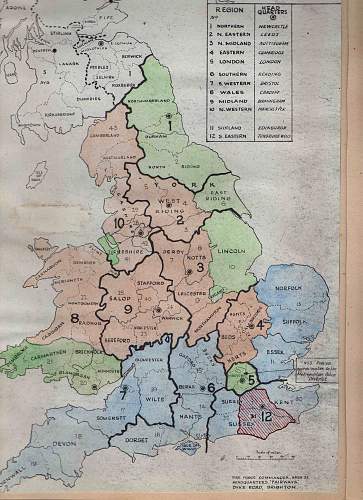
War Relics Forum
- Regions shaded Purple and Blue needed to be reinforced to above their maximum strength – the Purple regions were most impacted
- Regions shaded Green needed to be reinforced up to their maximum strength
- Regions shaded Brown were areas from which resources could be drawn from to provide for Purple, Blue and Green regions
The crucial role of the Fire Service during World War II
The war years proved to be the busiest for our Fire Brigades with fire fighters on the front line protecting communities during Air Raids and as part of Operation Colour Scheme.
Fire fighters were issued with one basic uniform; a steel helmet, rubber boots, trousers and waterproof leggings – although shortages saw some stuck with just Post Office uniforms!
The first air raid on London took place on 7th September 1940 and this would mark the start of The Blitz – where London endured bombings for 57 nights in a row. Most of the air raids took place at night, meaning fire fighters spent long hours extinguishing fire or dealing with explosions.
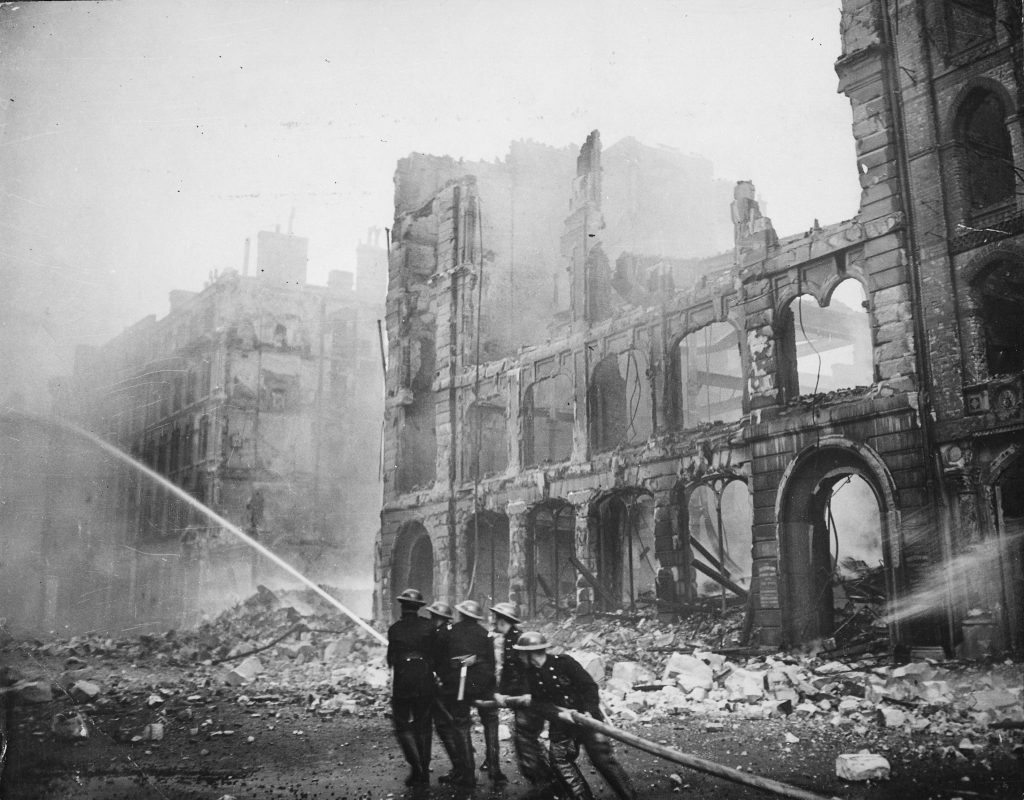
New York Times Paris Bureau Collection, Public domain, via Wikimedia Commons
In the first 22 nights of air raids, fire fighters had fought nearly 10,000 fires – and for many, this was their first experience of fire fighting…
And by 1943, over 70,000 women had enrolled in the National Fire Service, many becoming fire watches and drivers and managing the communications network.
Britain’s Prime Minister, Sir Winston Churchill honoured these great efforts and once said that the fire service “were a grand lot and their work must never be forgotten”.
The BRAND NEW History of the Fire Brigade 50p Collection
Issued to mark 200 years since the establishment of Britain’s first Municipal Fire Service, The History of the Fire Brigade 50p Collection shares the story of two centuries of heroic service.
Included in the set is the 1934 London Fire Brigade 50p Coin which depicts a World War II Fire Engine – a Dennis Chassis with an extendable ladder – in front of a background representing the city during The Blitz.

Each coin has been officially authorised by Buckingham Palace and King Charles III to pay tribute to the unsung heroes who have battled flames and saved lives for centuries.
A variety of specifications are available to order today from The Westminster Collection. Click here to view the COMPLETE range >>
The Rare Piece of WWII History Few People Know About…


As we approach the 80th anniversary of D-Day in June 2024, enthusiasts and collectors alike are eagerly seeking out military commemoratives from the era.
Amidst the rush, there exists a rare gem that only a select few are aware of, let alone possess.
It is the Hawaii Overprint Emergency Banknote issued between 1942-1944, and The Westminster Collection have a handful available today – flown to the UK straight from Hawaii.
Read on to learn the fascinating story, what makes them so scarce, and how you can secure one.
USA – World War Two
During the tumultuous years of World War II, the United States government found itself in a precarious position following the devastating attack on Pearl Harbor.
With deep concerns looming over the possibility of a full-scale invasion of Hawaii by Japan, urgent measures were needed to safeguard the American economy from potential exploitation.
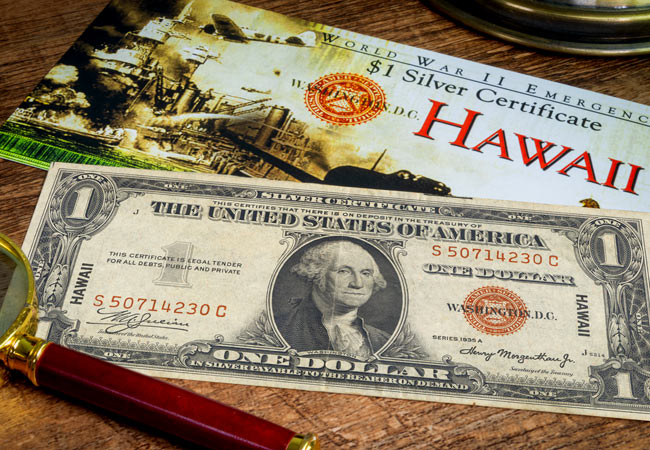
To counter this threat, the US government took swift action, issuing emergency banknotes specifically for use in Hawaii. These $1 Silver certificates bore distinct markings, featuring a brown seal and prominent “HAWAII” overprints on both the front and back.
This unique design served a crucial purpose: in the event the notes were seized by enemy forces, they could be repudiated, rendering them worthless thus spoiling attempts at economic sabotage.
A Rare Piece of Military History
Issued only for two years between 1942 and 1944, these emergency banknotes are exceptionally rare, with very few surviving examples still in existence today.
Their scarcity means they rarely make appearances on the secondary market, making them highly sought-after among collectors and historians alike.
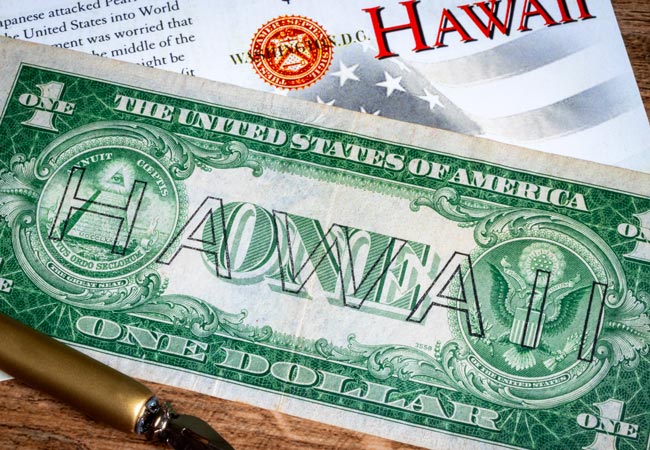
Less than 25 Available
Here at The Westminster Collection, we have managed to secure a limited number of these extraordinary artefacts.
In fact, there are less than 25 available for collectors in the UK, travelling all the way over from the States.
This represents a rare opportunity to own a piece of history that encapsulates the resilience and ingenuity of a nation during one of its darkest hours.
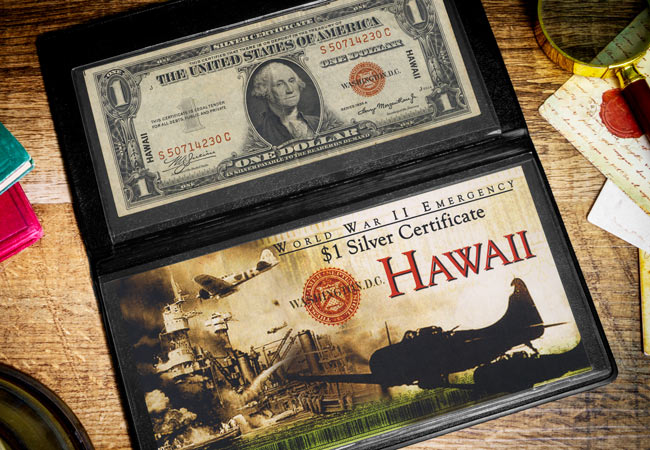
How to Secure Yours…
These WWII emergency banknotes offer a tangible connection to the past, serving as a poignant reminder of the unwavering spirit that prevailed during a time of global upheaval.
Don’t miss your chance to own a piece of this remarkable history.

